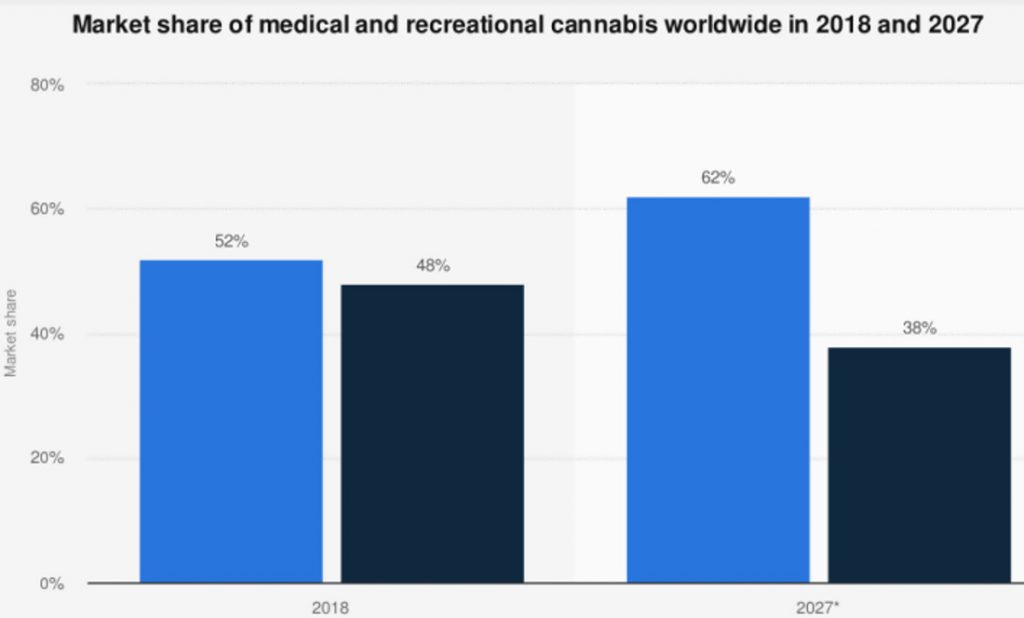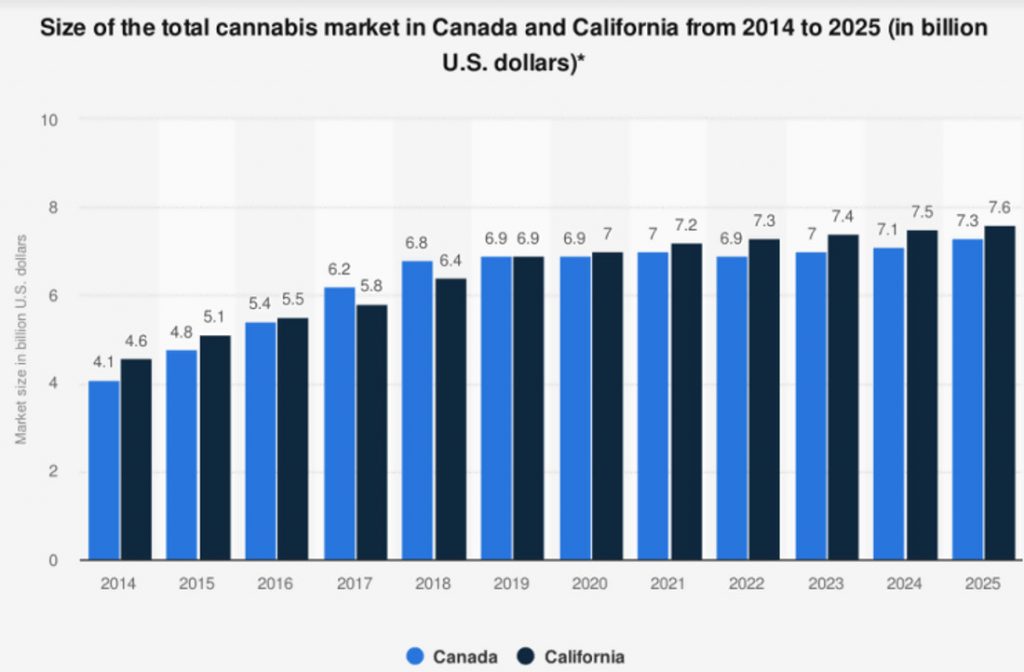Cannabis goes back to the era when ancient humans used hemp seeds as food while extracting fibers from cannabis for a range of uses. Quite naturally, they would discover that the substance has medicinal significance. Today, marijuana is useful for both medicinal purposes and for getting people high.
As an industry, the cannabis sector as mainly remained underground until some countries and a few US states began to decriminalize the substance. Most of the countries and US states that have a clear legal status for marijuana do not allow adult use. For example, while 33 US states recognize cannabis as legal for medical uses, only 11 accept adult use of the substance. The same is valid worldwide. Only a few countries like Belize, Uruguay, Jamaica, and Canada allow recreational use of marijuana. On the contrary, over 50 countries allow marijuana for medicinal uses.
Nonetheless, Statista data shows that the share of adult use of marijuana is more significant than that for medical use. In 2018, adult-use accounted for 52% of the industry. Interestingly, the share of cannabis used for recreational purposes is estimated to expand to 62% by 2027. In particular, increased legalization of the substance will aid the incredible growth of adult use.

The fruits of legalization are already apparent. In 2018, the size of the global legal cannabis market was approximately $13.8 billion, according to industry insights by Grand View Research. Further, the research firm expects the market to expand at an overwhelming CAGR of 23.9% between 2018 and 2025.
Which countries are aggressively pursuing the industry?
In 2018, Canada legalized marijuana use for both medical and recreational purposes. Before talk of legalization began in Canada, the country’s legal cannabis market size was smaller than that for California. Between 2014 and 2016, the California marijuana market size was consistently ahead of Canada’s by hundreds of millions. In 2016, the marijuana market size in Canada was $5.5 billion compared to $5.6 billion in California. However, the market size in Canada jumped to $6.2 billion in 2017, ahead of California's $5.8 billion, after the legalization process began.

In the US, the cannabis industry is active despite a lack of a definitive legal status at the federal level. Despite that, a few numbers of US states have come up with legal definitions for the substance. According to an LA Times report, licensed cannabis businesses in California is expected to earn around $3.1 billion in revenues in 2019. Since Canada’smarket size will reach $7.2 billion by yearend 2019, it then follows that California’s marijuana market will be the second-largest worldwide.
What are the sectors/areas where the application of the Global Medical & Recreational Marijuana Stores Industry is most today?
The marijuana industry is divided into two sectors, recreational and medical. As noted previously in this article, the recreational industry is the largest, especially since Canada and California decriminalized adult use of the substance. Interestingly, the largest companies in the marijuana industry operate in the adult-use sector.
With a market cap of $7 billion, Canopy Growth Corporation is the largest marijuana company in the world. The Canada-based company’s flagship products include dried flowers and derivatives like concentrates and oils, which are marketed under brands like Spectrum, Tweed, and Tokyo Smoke, among others.
Industry outlook
The industry is expected to witness a massive growth in both sectors going forward. Notably, the global legal cannabis industry should hit $66.3 billion by 2025, according to a Grand View Research study. Interestingly, this implies that the market will grow at 23.9% CAGR. According to the Grand View Research study, the growth of the industry will happen on the back of increasing the adoption of the substance for medical conditions like cancer and Alzheimer’s disease.
On the other hand, the adult use of marijuana is expected to increase on the back of the second round of cannabis legalization in Canada, popularly called Cannabis 2.0. Notably, Cannabis 2.0 increased the product range in the marijuana market. Mainly, potential adult users who could not consume the substance because of loathing smoke in their lungs can now do so by using derivatives like topicals. In a word, the global medical & recreational marijuana stores industry will be more significant in the next five years.

